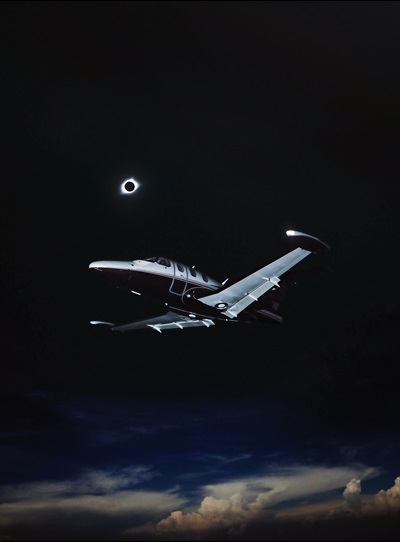Prior planning recommended for pilots flying during the total eclipse
Pilots may encounter impacts to air traffic and airport operations, as well as the necessity for prior permission required (PPR) reservations, along the path of totality of the April 8 solar eclipse.
Along the eclipse path, there are more than 450 airports. Pilots who are considering flying their general aviation aircraft to one or several of them, or planning to fly during the eclipse, should be aware of published guidance about travel and aircraft operations and should familiarize themselves with any fees and reservations that may be implemented at their destination.
The Department of Transportation has issued a domestic notice addressing need-to-know information about flying near or on the day of the eclipse. At airports along the path of the eclipse, pilots should anticipate higher traffic volume; delays during peak hours; limited parking; and the restriction or prohibition of operations like practice approaches, touch and goes, flight following, and flight training. Pilots should be thorough in their preflight planning and make themselves aware of all potential restrictions along their flight path—this means checking notams diligently.
“Aircraft should be prepared for potential airborne holding, reroutes, and/or Expect Departure Clearance Times (EDCTs) that may be issued for all domestic IFR arrivals and departures. Traffic Management Initiatives (TMIs) are possible,” per the DOT notice. “In order to assist FBOs with staging aircraft and to ease ramp congestion, aircraft departing airports along the eclipse path are strongly encouraged to coordinate their departure times as early as possible.”

To prepare for a higher volume of traffic, some airports along the path of totality are implementing reservation systems to maintain safety and security. Pilots should finalize flight plans early since some of the more popular viewing destinations are seeing reservations fill up fast. One such example is the Kerrville Municipal/Louis Schreiner Field in Texas, which has a PPR in place from April 5 to April 8 and is already fully booked with pre-registered aircraft.
Other airports and communities are taking advantage of the unobstructed views that an airport can offer and hosting events at the airport. Be aware that some of these events may be accompanied by an event or parking fee, like the $150 fee at Baxter County Airport in Arkansas, which affords pilots four-day parking at the airport, access to the event, a T-shirt, and eclipse sunglasses. Another example is the tiered fee at Poplar Bluff Regional Business Airport in Missouri, where pilots are encouraged to camp at the airport during the event and enjoy a slate of activities that will include musical performances and expert speakers.
The last eclipse that passed through North America in 2017 brought thousands of aviators and their communities to airports across the country. Early and diligent planning by pilots will ensure another opportunity to observe this rare phenomenon remains enjoyable and safe for all.




